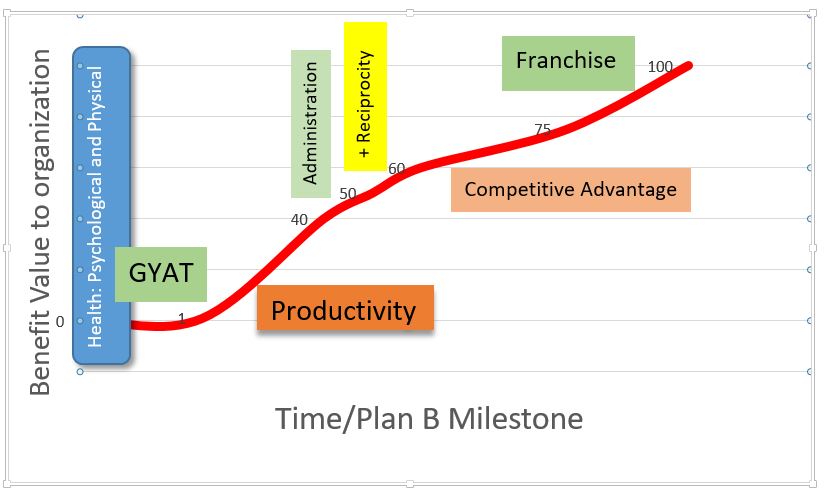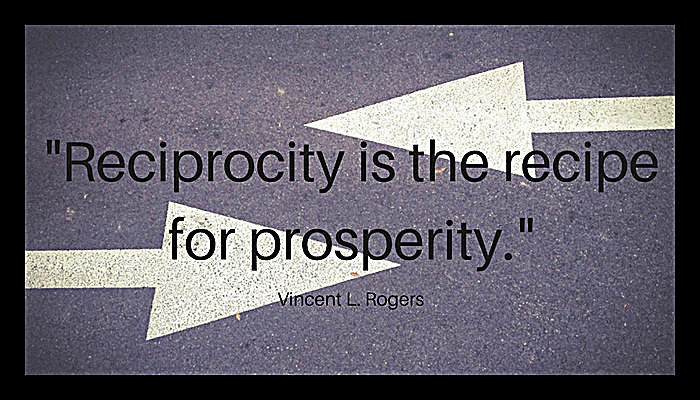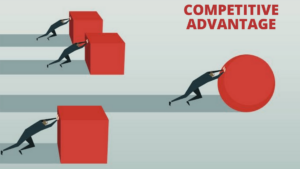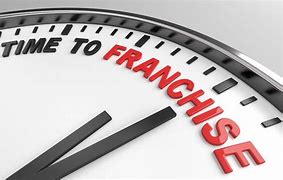The flourishing organization
The foundation of organizational flourishing is increasing productivity. It is 100% a workforce project. When the Business Process Reengineering fad was championed by Hammer and Champy in 1990 for productivity, it was top-down, where the workforce stood aside as outside engineers installed a new process for it to operate. By 1997 it was clear that BPR had run its course. The rise and fall curve of BPR matched the rise and fall of its predecessor Total Quality Management (TQM), also top-down, which peaked in the 1980s.
Increasing productivity is a psychological phenomenon, engineered by the interventionist for the keystones who then custom fit Plan B thinking to their workers. The root causes of Ca’canny are not biological, they are social. There is nothing to buy, nothing to install. The switch from Ca’canny to productive mode is so abrupt it affirms its roots in the subconscious mind, which has no inertia to overcome.
The economic view of Plan A Organizational Dysfunction (OD) serves to organize and quantify its scope and reach. There are direct costs, like productivity loss, and there are indirect costs, like overhead. Some Plan A intangibles, like morale, have real consequences that are eternally-debated opinions. The bottom line is that an accounting of just the quantifiable streaming losses in Plan A is more than enough reason to overwrite Plan A with Plan B.
Note that all the costs of Plan A OD directly subtract from net corporate profits. Note also that the windfalls of Plan B directly add to organizational net profits. The effect on the financial statement is net profits going from roughly <10% to >30% of gross revenue. That’s where flourishing begins.
On the humanitarian side, inalienable rights, health, and security, no attempt is made to use dollar estimates of these factors in the accounting of a flourishing hierarchy.

Understanding Social System economics
There are five categorie$:
- Productivity
- Administration
- Positive reciprocity
- Competitive advantage
- Franchising
Categories 3-5 are uniquely enabled by Plan B
There are direct financial impacts on the organizational from OD and there are indirect impacts of OD that eventually also show up on the financial statement. All the negative effects result from psychological phenomena. The OD era of plan A is heralded when Ca’canny of the workforce snaps into place. It signals the loss of trust.
Productivity
The direct effect of Plan A’s Ca’canny, a loss in productivity, increases the cost of production by a nominal 25%. Productivity is defined herein as production minus losses and waste.
Administration
The indirect costs of Plan A OD include:
- Turnover
- Workforce security, health and safety
- Psychological
- Physical
- Process availability
- GIGO, opacity. Undetected bad choices
- Customer dissatisfaction
- Stakeholder dissatisfaction
- Administrative overhead
- Inspection
- Policing for corruption
- Regulation
- Litigation
- Insurance
- Public relations
Scoping the complete impact of Plan A OD only became possible with the advent of Plan B in 2013. For us, the B-A comparison, same hierarchy, was an eye-opener.
Shifting Gears
When Plan A to Plan B project success has implemented Plan B and feedforward control is established, benefits expand in new directions:
- Positive reciprocity, autopilot
- Competitive advantage, segue
- Franchising prosperity, project

Note:
While feedforward control is the platform of Plan B, it is too scientifiker for most people to understand it in comfort. For those interested in how it works and ready to pay the price to learn about preventive control, it has its own page. You will find discussions of feedforward control in other pages scattered about this website.
Positive reciprocity on autopilot
As you know, every tall organization has a long list of interactions with the outside world. It has loads of vendors and suppliers as well as customers, regulators, and stakeholders. This array of outsiders adjusted to the organization when it was an untrustworthy, dysfunctional Plan A. Plan B turns those toxic relationships on their heads.
When Plan B benefits are steadily streaming, it means that the keystone role has changed from scrambling the revenue crew up the staircase of logical, necessary progression of tasks to gentle nudges and cheerleading. Positive reciprocity is an instinctual choice being made automatically by the subconscious minds of others at the interfaces with the outside world. It can’t be forced and it is too obvious to be misunderstood.
When Plan B overwrites Plan A, the suppliers, stakeholders, and customers can’t help but notice the changed context of transactions. The Plan B staff is GYAT, recognized instantly. Even the regulators, all Plan A organizations, notice. Over time, the outsiders and the local communities realize the positive change is for real. When that happens, the outsiders conducting the transactions, now mutually trustworthy:
- Want to learn more about how the big happy change was engineered
- Want the same thing for their own dysfunctional organization
- With trust established, want to contribute to a more productive, mutually-beneficial transaction with you
All this happens on automatic at the interfaces, each with its own story. The instinct of reciprocity provides the motivation. The keystones don’t have to do anything but applaud the participants. The benefits stream and things only get better with time.
While it takes time for benevolence (+-) to take effect in reciprocity (trust, +-, +-), based on GYAT, it ranks high on the scale of beautiful social behavior. It signals a mutual trust relationship has formed and acknowledges that you have made a positive contribution to their society. When you get there, expect to be surprised at the variety of benefits you receive you didn’t even know were available, largess that keeps coming your way on automatic. The reciprocity door of invariant human nature swings both ways in both directions!
You’re already familiar with negative reciprocity (++, – -). It triggers Ca’canny, immediate aggression, silently made manifest by the withholding of efficiency, a form of sabotage. You do it every time you are betrayed and it takes less than a centisecond to be triggered. Ca’canny cannot be reversed by the Plan A organization that caused it. An interventionist is required.

Competitive Advantage on Segue
While project Plan B success has demonstrated much of Plan B competency and capability, project end is not the end of Plan B scope and reach. Getting attention directed to competitive advantage is a human-nature natural. Competition is aggressive (++), fast-acting, and exciting. Winning battles opens the door for the victors to rape and pillage. The “high” is temporary.
The focus on competitive advantage is a natural continuation of the skills, creativity, and collaboration that orchestrated the jump in productivity attending Plan B installation. The sociotechnical competency it takes to boost competitive advantage is exactly the same talent it takes to boost system productivity and to extract entropy. To segue the workforce from the installation project to competitive advantage, all it takes from the keystone is encouraging the invariant instincts of curiosity and innovation in his crew. No training is required. Like an attack dog, creativity only has to be turned loose.
Suddenly, the competitive-advantage effort of the organization jumps in size and variety by orders of magnitude. Anyone who thinks innovation can only come from credentialed specialists knows nothing about innovation in the operational reality. The Plan A competition is helpless.
The keystone does not tell the workforce what to innovate. His job is to provide whatever information is requested by his revenue crew and resources for building prototypes. When the workforce voluntarily takes responsibility for competitive advantage, there’s no telling what will come to fruition. The point is that the staff concerned about competitive advantage, if any, has been increased from 1-2% of the organizational roster to over 83% – all veteran Plan B producers!
In application, the reaction of Plan A competition is to accuse the Plan B winner of cheating. “Why, if I had the workforce enthusiasm you have, I’d bury you.” What the potentate doesn’t say is: “I’d liquidate the company before I would go Plan B.” POSIWID

When Plan B becomes operational, performance measurements are taken for comparison to the original state-of-affairs benchmarks previously recorded. With benefits accumulating on the bottom line, it’s time to take stock of what the keystones and their revenue crews have attained compared to the size of the investment and the inherited dysfunctional system. The payoffs to the organization are direct, bottom line, and enormous.
At that point, where the Plan B payoffs are appearing in the treasury, the instinct of fairness asks each contributor to Plan B, “What about the people who overwrote Plan A with Plan B that created the windfall appearing in the organization’s bank account?
The organization can’t turn down risk-free Plan B prosperity without exposing its true value-system-in-use to the bright lights of POSIWID.
Long experience with Plan B has taught us the painful lesson – that the people instrumental to plan B success will not get a square deal from the host hierarchy. By now, you should be able to enumerate the reasons for that atrocity for yourself. It’s built-into every head-shed groupthink.
The fact is the architects of the plan B windfall have to arrange for fair allocation of the windfall proceeds for themselves. No organization in global society will provide it. Fortunately, there is an established commercial device for doing exactly this, called franchise.
Franchising Plan B
The workforce implements Plan B and the workforce syndicate owns the A to B process. Since none but the workforce can perform Plan B, its ownership is exclusive. There is no competition. There is no other way for management to benefit from Plan B, no matter how much money it threw at an alternate. Academia and think tanks run from Plan B like the plague. Consultants run from Plan B because they cannot implement it themselves. Government and finance, bureaucracies, go catatonic at the thought of Plan B.
The achievement of Plan B, through franchising, feeds a retirement account for those who made it happen and those who sustain it. The market for franchising Plan B in the USA is over 700,000 organizations, several million worldwide. While Plan B is being patented as a process by the interventionists, it is not a necessary feature for the franchise. The franchise agreement includes interventionist services for the FLLP. The Plan B workforce serves as benchmark and coach, level by level, for the franchisee workforce.
The type of franchise involved with Plan B is called “business format.” It licenses an entire way (ideology) of doing business with expertise and coaching provided by the franchisor that continues after Plan B is operational (entropy extraction). A franchise is a business whereby the owner licenses its operations and knowledge in exchange for a financial consideration. The franchisor is the business that grants licenses to franchisees.
Arranging for the franchise scope and marketing is done by the keystones and the interventionist. There are dozens of ways to position the streaming windfalls and many marketing strategies which will have to be tested. Since there are no precedents for a franchise as dramatic as Plan B, the list of strategies will be narrowed by the process of elimination. A marketing breakthrough for Plan B will be as monumental an event as developing Plan B itself.
Step back and think about what has been achieved in reaching and maintaining Plan B. The generic process works for all hierarchical organizations. To any Plan A organization you are the flourishing example of Plan B. Think about what you can offer, obtainable nowhere else, at any price. Only you can provide the interventionist for the FLLP. You can provide a full rank of veterans to coach the keystones through the process. There is no risk of process failure and nothing to buy.
An implementation example of Plan B, a real one you can audit, had 350 employees in an organization with annual revenue of $40M/yr at 10% net profit. After Plan B overwrote Plan A, with the same staff and equipment, net profit steadily rose to 35% of revenue.
The Franchiser Offering
Streaming Windfalls, Directly measurable factors, nominal streaming benefits
The delta symbol means difference and the arrows indicate direction of change.
- Productivity ∆↑ 25% (recovering the cost of Ca’canny + innovation)
- Turnover and absenteeism ∆↓ 80%
- Safety: Losses ∆ ↓ 50%
- Damage and waste ∆↓ 50%
- Availability ∆↑
- Health ∆↑
- Physical ∆↑
- Mental ∆↑
- Endocrine system
- Testosterone ∆↓
- Oxytocin surges ∆↑
- Endocrine system
Indirect-evidence opinion factors
-
- Quality of goods and services
- Morale
- Positive reciprocity
- Inalienable rights restoration
- Transparency
- Managerial, supervisory, and administrative workloads
- Resilience to unforeseen disturbances ∆↑
- Authentic, specified responsibility for goal attainment
- Entropy extraction ∆↑
Views: 144


